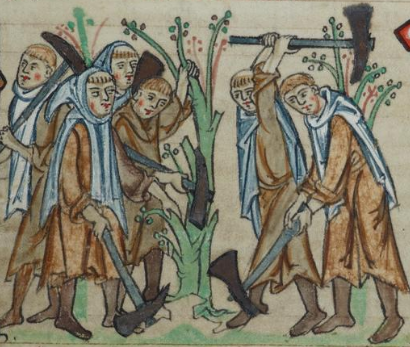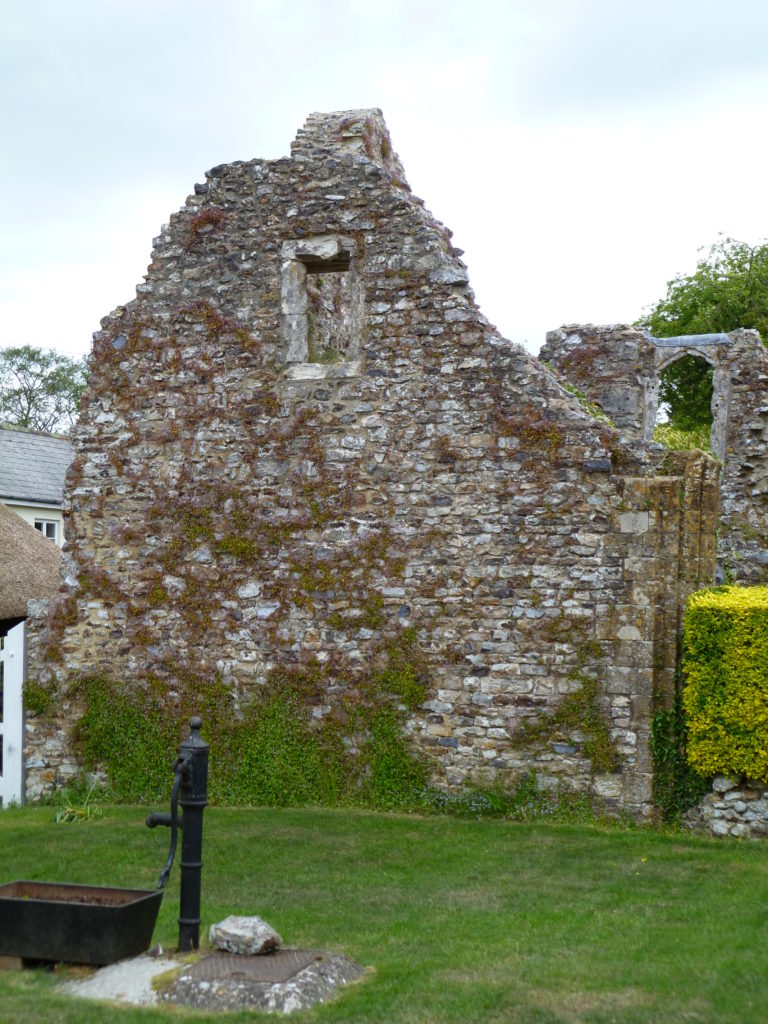
Posted by Des Atkinson
4 August 2020Writing in 1879, the great Victorian poet Gerard Manley Hopkins bemoaned the recent felling of the poplars at Binsey near Oxford: ‘All felled, felled, are all felled’. To him, those trees represented something precious, a ‘sweet especial rural scene’. Had he been alive in 1615, he might have felt similarly outraged about what had taken place in the manor of Dunkeswell since the suppression of its Cistercian Abbey in 1539. The fate of the woodland once managed by the abbey is described in the Norden Survey, a fascinating document put together in the years 1615 and 1616. The surveyor does not mince his words, but launches a broadside at those whom he described as ‘intollerable spoylers’ and bemoans the fact ‘that there is no punishment of offenders’. He is almost poetic in his description of the woodland of the manor, stating how ‘This Mannor within theis fewe yeares was the best timbered Manno’ in the west partes.’ However, much of that woodland had now been devastated. The survey had been carried out with the involvement of eight local jurors and they had been obliged on their oaths to give the names of these ‘offenders’. The surveyor is unstinting in his criticism of the greedy tenants. He describes how ‘All the timber and wood is wasted, beinge of late the beste manor of wood and timber trees in Devon’.

Thanks to the generosity of a local private benefactor, the whole of the Norden Survey is freely viewable online via London Metropolitan Archives. The entry for the manor of Dunkeswell can be found in document CLA/044/05/041 (images 245 to 262 inclusive). What this survey reveals is how actively and effectively the local woodland resources had been managed during the late medieval period by its monastic lord. Timber had been used for many purposes by the convent, and its effective management was essential to the economy of the abbey. The grandest of the trees would have been used for the monastic buildings, especially for roofing timbers. Much wood was required for domestic items such as doors, flooring and shutters, and for the agrarian economy. The nearby Augustinian nunnery of Canonsleigh Abbey had an annual fair where cart wheels were sold – we know this from the building accounts of Exeter Cathedral. The woodland at Dunkeswell would have been used for similar purposes, as well as for fencing, ploughs etc. A constant supply of firewood was required for heating and cooking. To satisfy all those varying requirements, the abbey had to manage its woodland carefully and sustainably. Different areas of woodland were earmarked for different purposes, with some left to grow into the largest trees for roofing timbers etc. Harvesting of the woodland would have been carefully controlled to ensure that sufficient supplies of each kind of timber were always available. Dunkeswell Abbey was fortunate that the Devon landscape and climate were so amenable to the growth of woodland. Other religious houses had to call on benefactors such as the king or other nobles to provide the largest timbers from their forest resources.
At Canonsleigh Abbey the richness of their woodland resources are described in the records of the Court of Augmentations. This was the organisation established by Henry VIII’s government to oversee the disposal of monastic property for the king’s profit after the suppression at the end of the 1530s. The records itemise the woodland plots at Canonsleigh showing how they contained trees at varying stages of growth. Just as at Dunkeswell, the abbey would have had their own foresters who provided for the careful management of the woodland.

Over sixty years after the dissolution of the monasteries, there was clearly still a strong local memory concerning the rich woodland resources that the monastic houses had once maintained. The level of control over those resources had clearly declined drastically since the manor of Dunkeswell passed into lay hands, firstly those of John Russell, 1st Earl of Bedford. When the Norden surveyor arrived in 1615, he was forthright in his condemnation of the free-for-all that had taken place across the woodlands of the manor.
What the Norden Survey helps to show is just how useful those records produced after the dissolution can be for the study of religious houses in the later medieval period. For example it also describes a set of long leases made by the abbey, some for the term of 100 years, that were still running in 1615. The last abbot, John Ley, could probably see that he was living in very uncertain times, and wanted to bind his temporal resources into local society to provide some stability. What he could not have anticipated was that his abbey, together with all the other religious houses of Devon and Somerset, would be swept aside in the whirlwind of suppression that took place in early 1539.